From the territorial border in UNESCO Phong Nha - Ke Bang…
It is impossible to count the number of documents between Vietnam and Laos, documents of the UNESCO World Heritage Committee related to the adjustment of the boundary of the World Natural Heritage Phong Nha - Ke Bang National Park (Quang Tri province) to include Hin Nam No National Park (Kham Muon province, Laos). The multinational heritage after this boundary adjustment is called "Phong Nha - Ke Bang National Park and Hin Nam No National Park".

The magical scene outside the entrance to Son Doong Cave, the world's largest cave, in Phong Nha - Ke Bang National Park
PHOTO: TRAN TUAN VIET
Archival records show that in 2003, when Phong Nha - Ke Bang National Park was recognized by UNESCO as a World Natural Heritage (an independent heritage of Vietnam), the UNESCO World Heritage Committee issued Decision No. 27COM8C.8 recommending: "Reiterating the request made in 1999 to the Member State to continue dialogue on a transboundary agreement with the Member State of Lao PDR, in which Phong Nha - Ke Bang and Hin Nam No National Reserve would be merged". This content was then also repeated by UNESCO 6 times in the sessions.
There was also a period when a dossier was studied and built to make Hin Nam No an independent UNESCO natural heritage, not a cross-border one. After that, a series of documents between the two governments of Vietnam and Laos promoted this cross-border heritage story. Although the Ministry of Culture, Sports and Tourism plays a role in promoting the heritage dossier, it does not stand alone in building the dossier. Along with the Ministry of Culture, Sports and Tourism, which is concerned with cultural issues and cultural heritage, there are also ministries such as Foreign Affairs , National Defense, Public Security, Justice, Finance, Agriculture and Environment, etc., which also consider territorial issues.

After each rainy season, the underground river level in Son Doong Cave rises, creating a clear lake with a special blue color.
PHOTO: TRAN TUAN VIET
Associate Professor, Dr. Le Thi Thu Hien, Director of the Department of Cultural Heritage (Ministry of Culture, Sports and Tourism), said: "The most difficult, complicated and sensitive issue is related to the border and national sovereignty . This problem exists because the eastern boundary of Hin Nam No National Park has a core zone adjacent to the core zone and buffer zone of Phong Nha - Ke Bang National Park and coincides with the Vietnam - Laos national border. Therefore, the maps shown in the nomination dossier and information related to the border need to ensure the consensus of Vietnam and Laos."

The "gems" in Son Doong Cave are spherical stones formed in "staircase" chambers made of calcium.
PHOTO: TRAN TUAN VIET
Therefore, according to Associate Professor Dr. Hien, this multinational dossier was completed on the basis of: "Careful review, requesting Laos to edit the nominated heritage map to ensure compliance with the Protocol on border lines and national border markers between the Socialist Republic of Vietnam and the Lao People's Democratic Republic dated March 16, 2016".
According to Dr. Hien, in order to have a basis for management, the Ministry of Culture, Sports and Tourism has codified the content of world heritages distributed in Vietnam and other countries (multinational heritages). Accordingly, the 2024 amended Law on Cultural Heritage has provisions on the preparation of nomination dossiers, management, protection and promotion of world heritage values.
… To the "tug of war" military legends
Before having the first UNESCO-recognized multinational natural heritage, Vietnam had a multinational intangible heritage of humanity recognized by UNESCO in 2015, which is Tug-of-war rituals and games. Accordingly, the countries that jointly own this heritage include Korea, Cambodia, the Philippines and Vietnam. In Vietnam, there are 4 localities practicing this heritage: Lao Cai, Vinh Phuc, Bac Ninh and Hanoi.

Super-sized tug of war rope in Korea
PHOTO: TL BY DR. LE THI MINH LY
However, after 10 years, the community practicing the Tug of War Ritual and Game has changed a lot. The fact that the dossier was recognized by UNESCO, the practice of this game has attracted other communities that also have this game. From there, they "send signals" for state management to take note, and at the same time connect the communities together. "In addition to the 6 communities initially included in the dossier, after 10 years, in Vietnam, 10 tug of war communities have been discovered. Among them, Tug of War in Nam Truc (formerly Nam Dinh province, now Ninh Binh province) has just been included in the list of national intangible heritage", said Dr. Le Thi Minh Ly, Vice President of the Vietnam Cultural Heritage Association.
The tug-of-war communities are closely linked, but also similar and different in meaning and practice. For example, tug-of-war in Hanoi is sitting tug-of-war, tug-of-war in Nam Truc is lying down tug-of-war. The tug-of-war ropes are also very different. In Korea, the tug-of-war rope is "hugely" thick. In Vietnam, there is a smooth rattan rope, while in some places it is braided rope...
In terms of meaning, many legends associated with tug of war are also military legends and border protection. Dr. Le Thi Minh Ly said that Nam Dinh tug of war is associated with the military legend of a general. The name of the heritage is also associated with the protection of the border, not even an inch is lost, not even a millimeter is left. "They are also creative in pulling with their own tactics, they keep their troops very carefully, no team knows which team until the competition. That is special to that community," Dr. Ly said. Meanwhile, according to PhD student Duong Ngoc Ha, Deputy Director of the Center for Scientific Activities of the Temple of Literature, Hoa Loan tug of war (Hanoi) is associated with female general Le Thi Ngoc Trinh (general of Hai Ba Trung). When her sword broke, she used a belt wrapped in pebbles as a weapon, sat on horseback and threw it straight at the enemy. Hoa Loan tug of war also leaves a rope outside so that "people from the underworld" can also participate in the game.
Cultural exchange after UNESCO title
Associate Professor, Dr. Le Thi Thu Hien also said that in the coming time, Vietnam and Laos will evaluate the tourism capacity in accordance with the capacity and ecological resource capacity in the whole Phong Nha - Ke Bang National Park and Hin Nam No National Park. In particular, Vietnam can support Laos to improve the capacity to build legal regulations in managing, protecting and promoting the value of world heritages in general, and Hin Nam No National Park in particular.
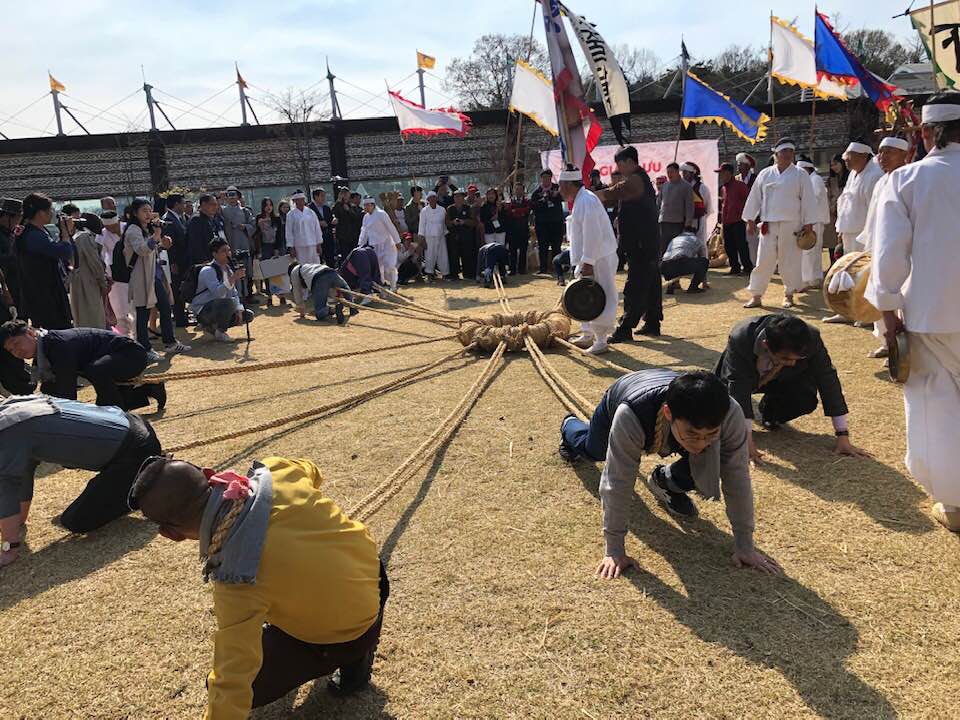
Tug of war game with crab shape
PHOTO: TL BY DR. LE THI MINH LY
Dr. Le Thi Minh Ly also said that after the UNESCO heritage title, the spread of tug of war in both Vietnam and Korea was very good. "Tug of war is currently a very well-protected heritage. The multinational dossier has a positive impact on the Vietnamese community. Previously, tug of war communities in Vietnam sometimes did not know each other, even though they were in the same dossier, they had never interacted with each other. But now, thanks to the Cultural Heritage Association connecting them, they interact. Without the dossier, Hanoi would not know how tug of war is done in Lao Cai, how the Tay and Day people tug of war. This multinational dossier story is most strongly developed in Korea and also has a positive impact on Vietnam, Laos, and Cambodia," Dr. Ly said.
Dr. Ly also said that in the near future, newly discovered and connected tug-of-war communities in Vietnam will make additional documents to request to add to the UNESCO dossier on Tug-of-war rituals and games. This is similar to the practice of many other multinational intangible heritages. "There are heritages that some countries recorded in 2009, but after decades, dozens of countries have added them. At first, there were only a few Central Asian countries, then it expanded to Europe, Asia... That is the effect of international relations," Dr. Ly said.
According to Dr. Le Thi Minh Ly, a multinational intangible heritage profile is built on the similarities of the heritage. "Researchers discover and reconnect with the purpose of going from similarities to enhancing cultural exchanges with each other. The purpose of a multinational profile on culture is like that, finding common ground to share," Dr. Ly said. This is also the reason why this year Vietnam will host the International Tug of War Festival in Hanoi. Accordingly, many tug of war communities from Korea, the Philippines... will come to Vietnam to participate. This sharing will integrate Vietnamese culture into the world cultural flow...
Source: https://thanhnien.vn/khong-gian-van-hoa-viet-qua-di-san-da-quoc-gia-185250827223014929.htm



![[Photo] Lam Dong: Close-up of illegal lake with broken wall](https://vphoto.vietnam.vn/thumb/1200x675/vietnam/resource/IMAGE/2025/11/03/1762166057849_a5018a8dcbd5478b1ec4-jpg.webp)
![[Photo] General Secretary To Lam receives Singaporean Ambassador Jaya Ratnam](https://vphoto.vietnam.vn/thumb/1200x675/vietnam/resource/IMAGE/2025/11/03/1762171461424_a1-bnd-5309-9100-jpg.webp)

![[Photo] Prime Minister Pham Minh Chinh receives the Chairman of the Japan-Vietnam Friendship Association in the Kansai region](https://vphoto.vietnam.vn/thumb/1200x675/vietnam/resource/IMAGE/2025/11/03/1762176259003_ndo_br_dsc-9224-jpg.webp)
![[Photo] Fall Fair 2025 and impressive records](https://vphoto.vietnam.vn/thumb/1200x675/vietnam/resource/IMAGE/2025/11/03/1762180761230_ndo_br_tk-hcmt-15-jpg.webp)


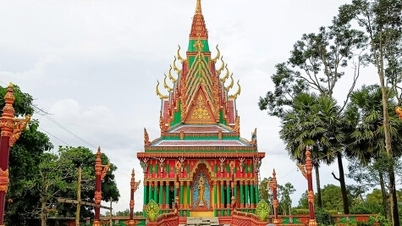



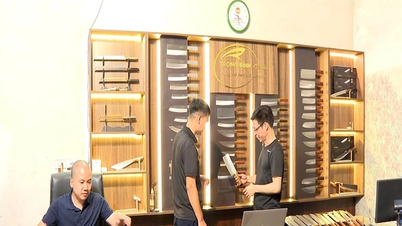

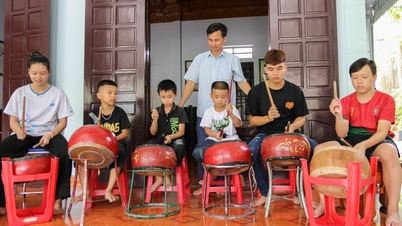




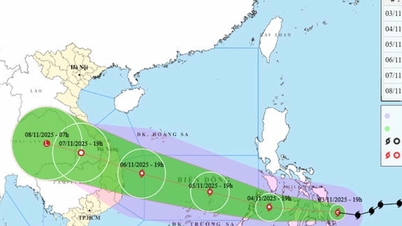




















































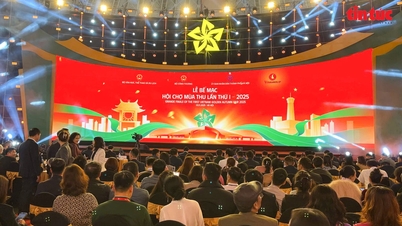










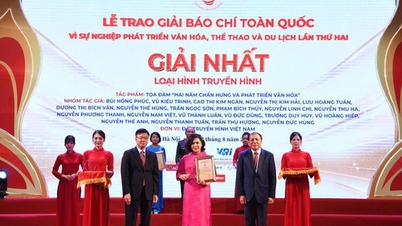




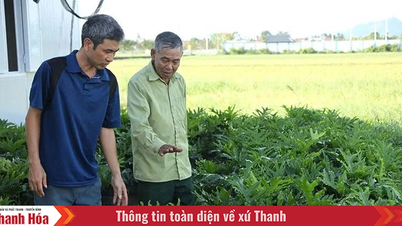




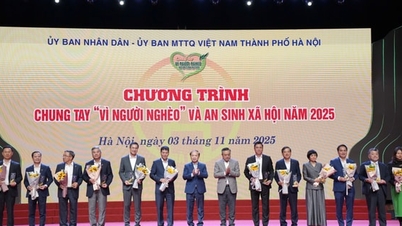
















Comment (0)